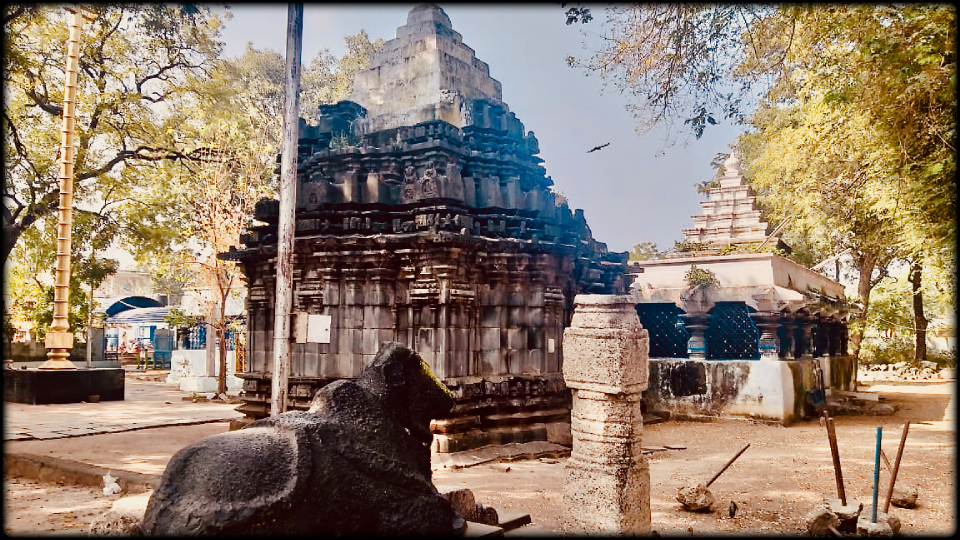As Mahashivratri approaches, devotees are gearing up to celebrate this sacred occasion with deep devotion and grandeur. This festival holds great spiritual significance for worshippers of Lord Shiva. If you are planning to visit some of the prominent Shiva temples in Telangana, this is the perfect time to embark on a spiritual journey and seek divine blessings.
Telangana is home to several revered Shiva temples. Some prominent ones include the Keesaragutta Temple, known for its historical and mythological significance; the intricately carved Ramappa Temple; the Chaya Someswara Temple; and the architectural marvel, the Thousand Pillar Temple.
Famous Shiva Temples In Telangana:

Keesaragutta Temple
The Keesaragutta Temple is a revered Hindu shrine dedicated to Lord Shiva and Goddess Parvati. Situated approximately 30 km from Hyderabad and 12 km from ECIL, this temple becomes a hub of spiritual activity during Maha Shivaratri, drawing lakhs of devotees. Alongside the main sanctum, there are separate shrines for Lord Laxmi Narsimha and Lord Rama with his consort Sita. A strikingly large Hanuman idol stands beside the temple, adding to its grandeur. Additionally, the temple houses a Veda Pathshala where students immerse themselves in the study of shlokas, rituals, and Hindu scriptures.

Ramappa Temple
The Ramappa Temple, also called the Rudreshwara Temple, is a magnificent Kakatiya-era Hindu shrine dedicated to Lord Shiva, located in Telangana, India. Situated 15 km from Mulugu, 66 km from Warangal, and 209 km from Hyderabad, this architectural marvel was commissioned by Recherla Rudra in 1213 CE, as recorded in an inscription within the temple. Nestled in a valley, its construction spanned nearly 40 years. One of its most fascinating aspects is the use of ultra-light bricks that can float on water. The temple’s intricate craftsmanship is evident in its beautifully carved walls, pillars, and ceilings, showcasing the artistic excellence of the Kakatiya dynasty.

Chaya Someswara Temple
The Chaya Someswara Temple, also known as Chaya Someshvara Swamy Alayam or Saila-Somesvara Temple, the Chaya Someswara Temple is a revered Saivite shrine in Panagal, Nalgonda. Built in the mid-11th century during the reign of the Kunduru Chodas, a branch of the Telugu Cholas, this temple stands as both a historical and spiritual landmark. Dating back to the 11th–12th centuries, it is renowned for its architectural marvel, the mysterious shadow (Chaya in Telugu) of a pillar that continuously falls upon the Shivalingam throughout the day. This unique phenomenon along with its rich heritage makes it a significant site for devotees and history enthusiasts alike.

Kaleshwara Mukteswara Swamy Temple
The Kaleshwara Mukteshwara Swamy Temple is a distinctive and sacred Hindu shrine dedicated to Lord Shiva, located in Kaleshwaram. What sets this temple apart is the presence of two Shiva Lingas, known as Lord Shiva and Lord Yama, both resting on a single pedestal, called the Panavattam. This rare phenomenon makes the temple one of a kind in India. It is also one of the three Shiva temples that define Trilinga Desham, or the “Land of Three Lingas.” Enhancing its uniqueness, the temple’s sanctum sanctorum has four entrances in different directions, further enriching its architectural and spiritual significance.

Pachala Someswara Temple
The Pachala Someswara Temple, a significant Saivite Hindu shrine, is located in Panagal Village, just 4 km from Nalgonda town and approximately 110 km from Hyderabad. Built in the 11th century by Prataparudra-I, this temple stands in close proximity to the renowned Chaya Someshwaralayam. A major pilgrimage destination, especially during Maha Shivaratri, it is distinguished by its unique idol of Lord Shiva, which is intricately carved from green onyx. This distinctive feature gives the temple its name, with “Pacha” meaning “green” in Telugu, adding to its cultural and spiritual importance.

Komuravelli Mallanna Temple
The Komuravelli Mallikarjuna Swamy Temple, widely known as Komuravelli Mallanna Temple, is a revered Hindu shrine situated atop a hill in Komuravelli village, Siddipet district, near Siddipet. Dedicated to Mallanna, a form of Lord Shiva, this temple holds great spiritual significance. The idol of Lord Mallikarjuna Swamy was installed around 500 years ago, making it a historic site of worship. Mallanna is also venerated as Khandoba by Maharashtrian devotees. Within the sanctum sanctorum, he is worshipped alongside his consorts, Golla Kethamma, Goddess Ganga, and Medalamma, who is considered a form of Goddess Parvati, further enriching the temple’s divine presence.

Raja Rajeswara Temple, Vemulawada
Vemulawada, a sacred town located in Rajanna Siricilla district of Telangana, is renowned for its ancient Shiva temple dedicated to Sri Raja Rajeshwara Swamy, one of the most prominent Shaivite shrines in the region. Popularly known as Dakshina Kasi, this temple is steeped in history, with its origins lost in antiquity and even mentioned in the Puranas. Renowned for its architectural brilliance and spiritual significance, the temple enshrines Lord Shiva in the form of Raja Rajeshwara Swamy, affectionately called Rajanna by locals. Flanking the main deity are the idols of Sri Raja Rajeswari Devi on the right and Sri Lakshmi Sahitha Siddi Vinayaka on the left, adding to the temple’s divine aura and making it a significant pilgrimage destination.

Trilinga Sanghameshwara Temple
Sri Sri Sri Trilinga Sanghameshwara Swamy Devalayam, situated in Vilasagar village of Karimnagar district, Telangana, stands as a remarkable and ancient Shiva temple. What makes it unique is the presence of three Shiva Lingas enshrined in separate inner sanctums (garbha gruha), each facing a different direction—east, north, or south. According to folklore, Lord Shiva manifested as three Lingas at Kaleswaram, Srisailam, and Draksharamam, forming the sacred Trilinga Desa. This deep-rooted connection to Shaivism is evident in both Telugu states, Andhra Pradesh and Telangana, where devotion to Lord Shiva has been a significant cultural and spiritual tradition.

Thousand Pillar Temple
The Thousand Pillar Temple, also known as Rudreswara Swamy Temple, is a historic architectural marvel situated in Hanamakonda. Dedicated to Lord Shiva, Vishnu, and Surya, this temple is a testament to the grandeur of the Kakatiya dynasty. Recognized for its cultural significance, it has been included in UNESCO’s tentative list of World Heritage Sites alongside Warangal Fort, Kakatiya Kala Thoranam, and Ramappa Temple. Maintained by the Archaeological Survey of India, the temple is renowned for its intricately carved pillars and remarkable sculptures. A massive Nandi statue, sculpted from a single rock, stands as a striking feature, while the finely detailed rock-cut elephants and exquisite engravings further enhance its artistic brilliance.












